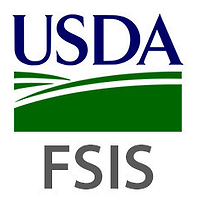A major change to the way data are shared in the food industry is just 1 year away. The GS1 Global Data Synchronization Network (GDSN) will be restructured and streamlined to keep pace with the growing demand for fast, accurate product information beginning May 6, 2016. The GDSN enables trading partners to globally exchange product information in an automatic and efficient way.
Why Is the GDSN Beneficial?
Today, meeting the demand for accurate and consistent information is key to a business success. Not only are there supply chain efficiencies to be gained, but consumers are expecting to have complete product information available with the swipe of a smartphone. Pending regulations are also driving the need for trustworthy product information in real time.
The GDSN is an important piece of the GS1 System of Standards—the most widely used supply chain standards in the world. The system enables a common language to identify, capture and share supply chain information, ensuring better data quality and greater efficiencies. The role of GDSN is to help ensure data is shared between trading partners in accordance with GS1 Standards and connects the physical flow of goods and services to the flow of information. With the GDSN, food manufacturers, distributors, retailers and operators have access to the same continuously refreshed data. Currently, information for 579,000 foodservice items is synchronized in the network and the number of items continues to grow on a daily basis. The GDSN allows for the continuous sharing of product information such as package measurements, nutrients, ingredients, allergens and whether the food is gluten-free, Kosher, Halal, vegan or organic.

The flow of information in the GDSN is represented in Figure 1.
Why Is It Changing?
Use of the GDSN is growing in various industry sectors, prompting the need for more streamlined information sharing. The changes are termed a “Level 3 Major Release,” which signifies a complete version change (from 2.8 to 3.1) and is non-backward compatible—users cannot use the previous version once the major release takes place. The 3.1 release is designed to respond to market needs to support regulatory compliance requirements, provide product information for business-to-consumer purposes and increase speed-to-market capabilities. As the first major release to the network since 2005, the change will severely impact the foodservice and retail grocery industries, as there are numerous enhancements planned for the manner in which food and beverage product information is shared. There will be product attribute deletions, some attributes will now be mandatory instead of optional and there will be a restructuring of message formats—to name just a few changes.
What Are Some Ways to Prepare?
One year might sound like a long time to prepare for these changes, but for those in the data world, that is actually “crunch time.” Ensure a smooth transition to the better, faster GDSN by following these five steps:
1) Educate yourself on the transition. Armed with a high-level understanding of the major release, organizations can eliminate the chance they will be caught off-guard by the changes and will know what questions to ask their data pools (technology providers who support the connection to the network) and trading partners in preparation. GS1 US is offering opportunities to learn more about the Major Release throughout the year ahead, including webinars and workshops. A complete listing is available at www.gs1us.org/gdsnmajorrelease. The next workshops will be co-located with GS1 Connect 2015 in Austin, TX, on May 31 and June 4. Worksheets and tools created by the GS1 US Standards Team are used during these sessions to provide examples and demonstrations of how the changes will affect data synchronized between the data pools and trading partners.
2) Consult with your certified data pool. GS1-certified data pools are already preparing for the GDSN major release transition. Contact your representative or select a data pool now to begin formulating a specific transition plan, since companies will be affected in different ways based on their size or their current GDSN usage. They will have impact documents ready for your review and can delve into each of the changes to evaluate how far you have to go to be ready for the transition.
If you are just beginning to establish GDSN in your organization, a list of certified data pools is available on the GS1 website. Certified data pools comply with GS1 Standards and are interoperable as the interface to the GDSN.
3) Set up an internal organizational plan. Professionals in the field of information technology, data management and data synchronization will most likely be at the forefront of the GDSN major release. However, it is beneficial for supply chain management, food safety and sales roles to be aware of the coming changes too. If it has not already been discussed internally, now is the time to formulate a plan to prepare for the transition based on your company’s specific data needs.
Business processes internally and between trading partners may need to be changed prior to May 6, during the transition and after it is implemented. During the transition time, the network will be inaccessible for an estimated 5–6 days. Business needs to continue as usual during the transition, so discuss with your trading partners now how you will still exchange product data and handle new item setups during the transition.
4) Set aside budget. Determining a budget for the major release will vary by company, but standards experts estimate that the transition will cost a fraction of the initial costs experienced when the company first implemented GDSN. The budget should cover tasks such as data mapping, changes to the IT structure, changes to business processes for collecting data and other setup tasks in accordance with the new standards. Your certified data pool should be able to assist with determining the budget impact specifically based on your organization’s use of the GDSN.
5) Watch for GDSN communication/progress reports. The GDSN team has already been busy preparing the various new standards associated with the major release. They are available on the GS1 website in a section outlining all GDSN v3.1 Major Release standards. Additionally, GDSN posts helpful information tools on an implementation-oriented website, which provides resources on the business value of the GDSN and how to manage the change. Leading up to May 6, 2016, watch for GDSN to gradually release helpful information like this to facilitate a smooth transition.
Remember, if an organization chooses to do nothing, messages about data could fail to be published, accuracy will suffer and more inefficiencies and inconsistencies will be introduced into the supply chain. Now is the time to take action and ensure your organization can take advantage of the new features of 3.1.
Angela Fernandez is the vice president of retail grocery and foodservice at GS1 US.
>




